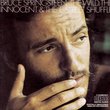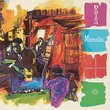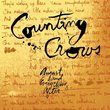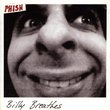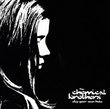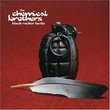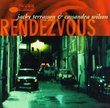| All Artists: Johann Sebastian Bach Title: Bach: Sonatas & Partitas Members Wishing: 0 Total Copies: 0 Label: RCA Release Date: 10/10/1995 Genre: Classical Styles: Chamber Music, Historical Periods, Baroque (c.1600-1750), Modern, 20th, & 21st Century, Instruments, Strings Number of Discs: 2 SwapaCD Credits: 2 UPC: 090266174829 |
Search - Johann Sebastian Bach :: Bach: Sonatas & Partitas
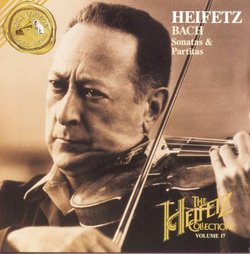 | Johann Sebastian Bach Bach: Sonatas & Partitas Genre: Classical
|
Larger Image |
CD DetailsSimilarly Requested CDs
|
CD ReviewsCHACONNE A SON GOUT DAVID BRYSON | Glossop Derbyshire England | 04/03/2005 (5 out of 5 stars) "It was only after I had first picked the Heifetz version of the Bach solo violin pieces for my vinyl collection many years ago that I read an authoritative-sounding review of the entire field in these works that pronounced him firmly to be the best. I have not spent my musical life since then comparing versions of these compositions, towering masterpieces though they be, nor do I propose to in what time I have left. On the other hand, speaking as an amateur musician and as a non-violinist, I know what these renderings have done to make the (seemingly) forbidding solo works as natural a part of my musical background as the Brandenburgs or the violin concertos. I also know that I have heard no recent version that has quite the same effect on me. Heifetz's centenary came around in 2001, and reissues are trickling out in the familiar way with such events. This is one that I welcome in particular, because I'm not sure I know anything, certainly not among the virtuoso repertory that he first made his name in, that demonstrates the special and unparalleled greatness of Heifetz in the way this set does. His approach is neither antiquarian nor romantic, but really extremely straightforward. He uses little or no vibrato, and no great dynamic range or wide rhythmic latitude. Unlike the cello suites, those for unaccompanied violin provide, in the slow movements of the sonatas, some highly lyrical melody: in particular the slow movement of the second sonata is a very famous Bach tune indeed. I have heard it from all sorts of sources that I'd rather not have, and it will be a good test of how you may react to this set in general. I'm sure Heifetz could have played it like Mantovani if he had wanted to, but he chooses a plain and natural approach that I find wears well. He does not sentimentalise anything here, but on the other hand he doesn't cultivate dryness for its own sake either. Bach's indications as to tempo are far from complete or clear, but for me Heifetz errs on the right side with brisk speeds in all movements not obviously intended to be slow. I feel I learned from Heifetz what music like this is about, not because I was an adept pupil but because of the firm intellectual grip in his interpretation that could overcome even my natural hebetude of understanding. What I would say to any nervous music-lover uncertain how to approach such compositions is this - don't think of these pieces as `unharmonised' for starters, even when the writing is in single notes. Harmony can be consecutive as well as concurrent, just as prison sentences can be. It would be false to the testimony of our own ears to call Bach's Chromatic Fantasia or the last movement of Chopin's `funeral march' sonata `unharmonised'. Standard non-melodic sequences such as arpeggios, broken chords and the Alberti bass are `harmony', just as much as block chords are. Another thing Heifetz can teach us is a bit about is fugues. The three sonatas that comprise half of this set of six suites each starts with a prelude and fugue. Fugues are a natural for combinations of distinct voices, whether these be human voices or the sections of a string orchestra or small instrumental groupings, and also for keyboard instruments. Bach was the greatest of all writers of fugues, and Tovey was the greatest commentator on his methods. However what Tovey understands so deeply and expounds so brilliantly is only one type of fugue, the fully worked-through variety represented in the 48, the Musical Offering and of course the mighty Art of Fugue itself. He trips himself up with his own description of fugue as `a texture'. There was a whole tradition of Italian fugues in which it was a looser arrangement altogether, one in which all that had to happen to qualify as a `fugue' was for the subject to put in an appearance at intervals. Tovey himself can appreciate that point perfectly well in the context of the fugue in Beethoven's Weihe des Hauses -- there is no such thing as a fully worked-through fugue for a symphony orchestra. Although he could see it in the context of his beloved Beethoven's great tribute to Handel, in Handel himself he failed to see the point entirely, and as far as Bach's fugues here are concerned he drifts, in consequence of his own theories, into a mental miasma involving `implied' fugal entries, whereas I believe the truth is that these fugues are half-way to the Handel method with long monodic sequences simply lacking entries, implied or explicit, of the fugal subject. Throughout Heifetz prefers severity to sentimentality, but I find him all the more expressive for that very reason. There is a high and mighty concentration and seriousness running through these accounts, relaxing a little in the E major partita, but reaching its apogee in the great chaconne of the D minor. If anything here justifies Heifetz's approach this, one of the greatest pieces of music in the whole world, does. Maybe you will spot the Lost Chord in it, as I think I do." Heifetz was a perfectionist and played cleanly with passion! DAVID BRYSON | 02/08/1999 (5 out of 5 stars) "This Heifetz' performance of the "Sonatas and Partitas for Unccompanied Violin" by J.S.Bach can hardly be surpassed by any other violinist(as brilliant as he might be) because Heifetz was a perfectionist and possessed an outstanding control of the instrument what enabled him to play these pieces not only faithfully to the metronome but also displaying a show of interpretation, as far as allowable by works of this kind.The masterful "cleanness" of the playing give us the impression of hearing several "voices", it is, not only just one violin but two, three, four all playing together and separately! For the ensemble of his work, always performed with the highest degree of professionalism, perfectionism and passion, Jascha Heifetz(1901-1987) is considered by many "the twentieth century violinist".I agree fully with this!" Heifetz is the best! DAVID BRYSON | 06/19/2003 (5 out of 5 stars) "Bach and Heifetz! Sometimes both names appear on the discussions, but it depends what are you looking for. If you know that music should be always alive in each single note this recording is for you. If you like to listen amazing polyphony this recording is for you. If you are looking for the fantastic energy this is for you.
If you are looking for the sound like tear of the soul this is for you. Everybody try to discuss Heifetz, but he is more than violinist and his laws belong only to him." |

 Track Listings (12) - Disc #1
Track Listings (12) - Disc #1